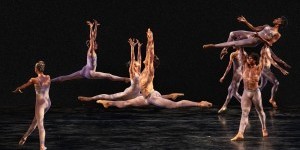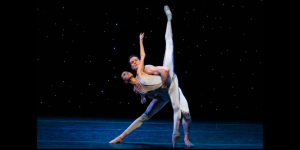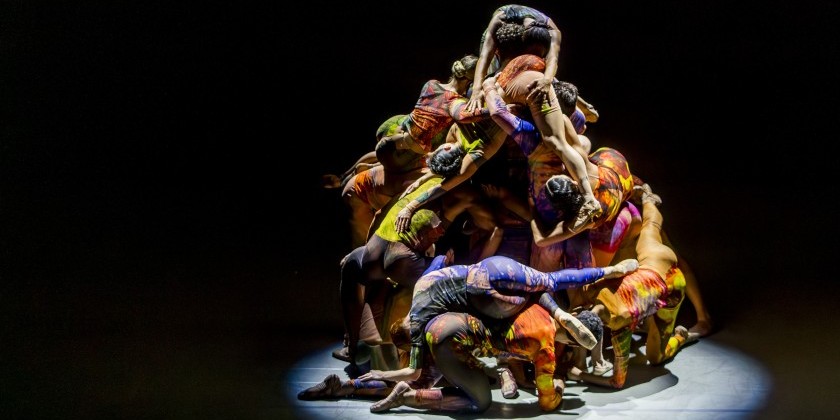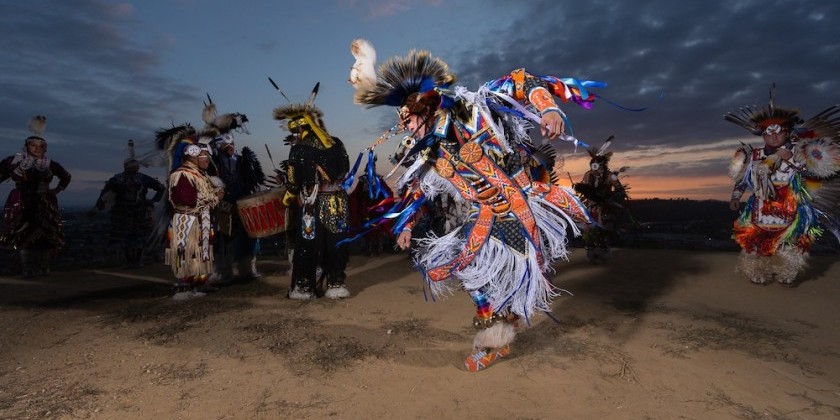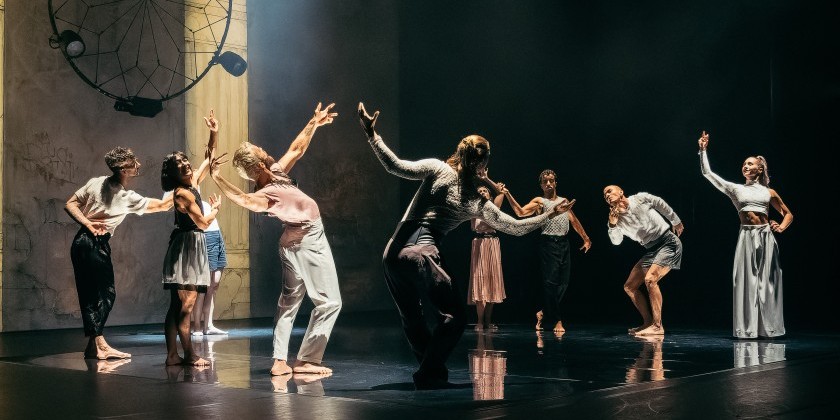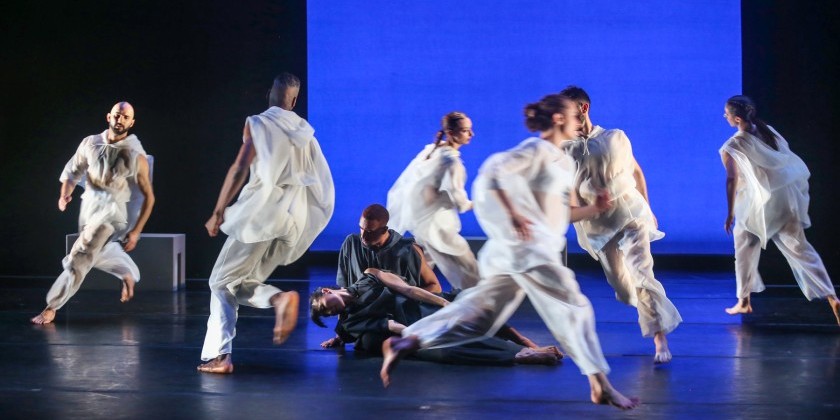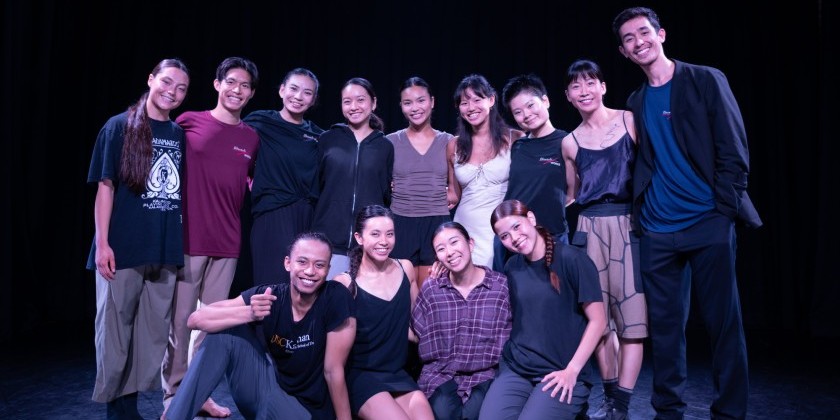IMPRESSIONS: Limón Dance Company at The Joyce Theater

Artistic Director: Dante Puleio
Associate Artistic Director: Logan Frances Kruger
Executive Director: Michelle Preston
Company: Natalie Clevenger, Joey Columbus, Ian Debono, Mariah Gravelin, Johnson Guo, Stephen Haley, Deepa Liegel, Ty Morrison, Olivia Mozie, Jessica Sgambelluri, Savannah Spratt, Lauren Twomley
Violinist for Chaconne: John Marcus
Oct 16, 2025
For the launch of the Limón Dance Company’s 80th anniversary season, Artistic Director Dante Puleio has decided to take some artistic risks presenting two novel arrangements of Limón's canonical works Chaconne and The Emperor Jones, and one world premiere, Jamelgos by Diego Vega Solorzo. Some of Puleio's choices resonate, others not so much.
Chaconne (1942), originally created by Jose Limón as a solo for himself is here expanded for a multigenerational cast of twenty-one dancers. Puleio’s vision turns the sculptural, reverent solo into a communal social dance featuring current and former company members, dancers from Limón 2, and students from Fiorello LaGuardia High School for the Performing Arts. It is pure joy. Puleio reminds us that Limón's history is carried forth in the bodies of those who dance his masterworks to life generation after generation. Chaconne distills the essence of Limón’s artistry: fluidity and command, boldness and refinement. Set to the final movement of Bach’s Partita No. 2 in D minor for solo violin, performed live by John Marcus, Chaconne translates the music’s sweeping grandeur into physical form.

Rather than a meticulously exact corps de ballet, this cast exemplifies beauty in difference. Not every dancer holds a balance , executes multiple turns, or lowers themself to the ground on their knees—those technical elements are not what make Chaconne great. The solo's enduring power lies in the generous, open positions of the body, the spiraling torso, movements that suspend and release, and the sensitivity of fingers that hold the air as a precious object.
This evening's dancers achieve these goals beautifully as they communicate their inherent delight in dancing Limón’s choreography. Maxine Steinman, in particular caught my eye, the pleasure of dancing this work was evident in her every expression.

Also reimagined on this program is Limón’s 1956 The Emperor Jones. Based on Eugene O’Neill’s play of the same name, The Emperor Jones tells the tale of a criminal fugitive who positions himself as emperor of a small Caribbean island. Reconstructed with a mixed gender cast (Limón’s original was all male), Puleio’s version, faithful to the original choreography, changes the setting to a contemporary urban one, eschewing racial tension for corporate greed to comment on today’s social and political climate.
Seated in a comically large leather armchair, wearing a fedora and a holstered gun that hangs squarely between his legs, Johnson Guo as the Emperor Jones is preening and prideful, sinuous, and strong. Blessed with height, Guo's long torso allows the juicy spirals of Limón’s style to appear even more visible. The Man In White, Joey Columbus, charasmatically beguiles with the power of his jumps and taunts with the tilt of his chin. Program notes speak of queer subtext and sexual tension, however Guo and Columbus’ interactions on stage do not manifest this. Both dancers are gripping performers and I would have liked to see more dynamic play between them.

Of the 20th century modern dance pioneers, Limón’s work is, in my opinion, is the most timeless. His arresting combination of fluidity and weight, the controlled freedom of bodies falling through space, and his attention to architectural detail make his work accessible. Puleio furthers that accessibility when he speaks to the audience after Chaconne, a practice I remember from my last viewing of the company two years ago. He is grateful, excited, down to earth, and charming as he provides context for what is to come. However, Jamelgos, choreographed by Diego Vega Solorza, an artist born in the same region of Mexico as Limón, is not the successful risk Chaconne proved to be.

The piece opens with arresting imagery: a naked man hangs by his hands from a pipe suspended over the stage, another lies prone on the floor in the shape of a cross. The hanging man drops and walks over the prone one, who, upon rising, reveals he is wearing a horse's tail. The two dancers merge in the form of a centaur. Six dancers, identically dressed in leather helmets with horsehair tails, and very little else, resemble Praetorian guards as they stealthily emerge from pitch blackness in dreamlike slow motion.
In comparison, the rest of Jamelgos is disappointing. The lighting scheme by Corey Whittemore does most of the heavy lifting, contouring chiseled musculature, naked skin, and the flicking white-blonde horsehair tails. The choreography vacillates between extreme slow motion and quick, percussive contractions, but never develops or evolves. Interesting the first time around, the movements are too repetitive, the patterns too predictable, to captivate attention for long. In the program notes, Vega Solorza presents Jamelgos as a rebellion against fixed ideas of masculinity, something that seems thematically well-connected to Limón’s works that expose tragedy resulting from rigid masculine ideals, but the sameness of the patterning feels more like a drawn-out acid trip than a revolt.

Applause to Puleio for his efforts to reconceptualize Limón's works for contemporary audiences. Such re-examinations are vital for the survival of institutions such as the Limón Dance Company, even if not every exploration is a hit.





